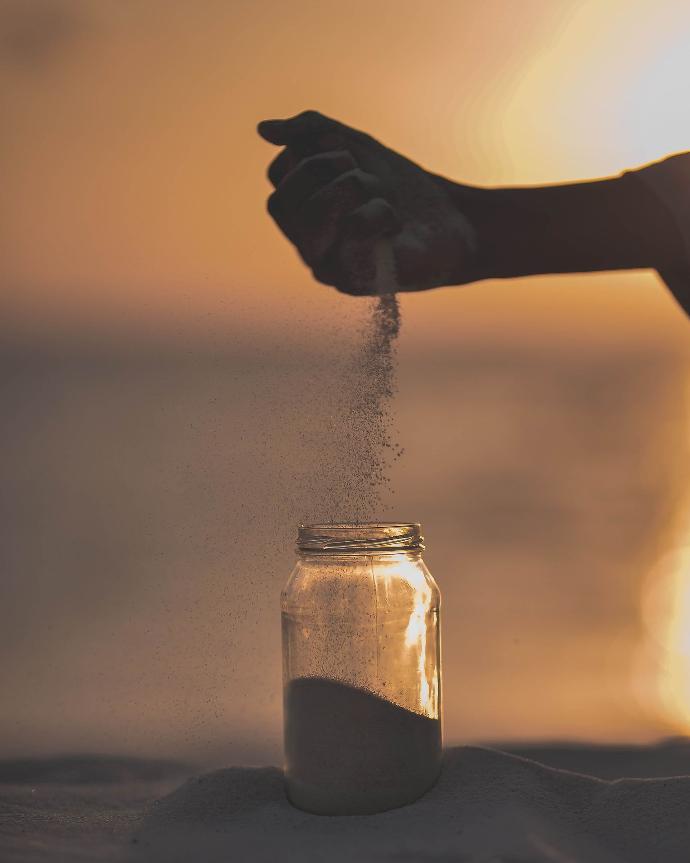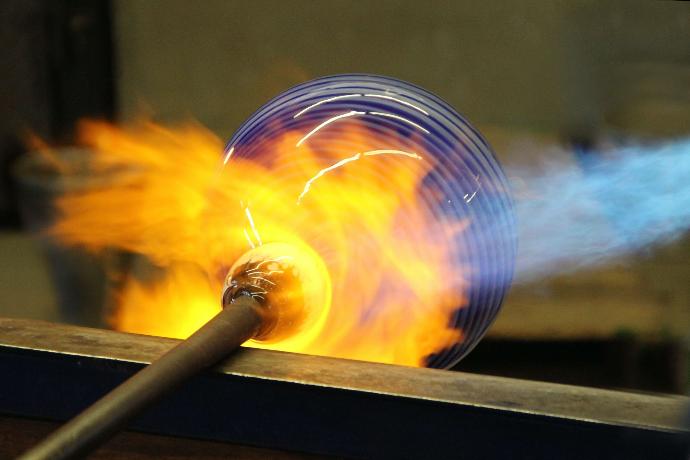Whether it is for glass bottles, glass jars, glass containers for food storage, … glass became a first choice material in our kitchen.
You are probably wondering how does the glass industry work, how are your glass bottles made ? You are at the right place cause I'll answer your questions in this article.
CONTENTS
1. The composition of glass
2. The glass manufacturing process
a. Fusion of raw materials
b. Glass shaping
c. Solidification
3. Can we find glass made in Europe ?
1. The glass composition
Glass is naturally present in nature. For example, obsidian is a natural volcanic glass.
However, the glass we use is obtained artificially. For this purpose, sand is used whose main component is silica (SiO2). The glassmakers call this the vitrifier. It represents about 70% of the glass.
The other raw materials are soda ash (sodium oxide, Na2O) which allows the melting temperature of silica to be reduced. It represents about 20% of the glass. Finally, the remaining 10% is lime (or calcium oxide, CaO) which makes the glass more resistant.

2. The glass manufacturing process
a. Fusion of raw materials
Once all the raw materials are measured in the right quantities, they are placed in a large oven and heated to temperatures of up to 1600°C. After about 12 hours, a liquid mixture is obtained.
b. Glass shaping
Once the liquid glass is out of the oven, it can take any possible shape ! There are different techniques for shaping glass: it can be blown, pressed, floated on a tin bath or cast in a mold.

In the case of a window of a house for example, the glass will not be blown but it will be put on a tin bath. Once the mixture in the furnace has become liquid, a more or less large layer will be put on the tin at a temperature of about 600°C.
This form of glass is called "float". The two materials do not mix because glass is less dense than tin and therefore the glass will float and stay on the surface.
c. Solidification
To prevent the glass from becoming too brittle during the cooling process, it undergoes a new heat treatment. The glass is heated up to temperatures of 600°C to improve its resistance. Then the glass is cooled rapidly to solidify it.
In the case of a car window, the glass will be tempered. It will simply be put in cold water while the glass is still molten, which gives it a much higher resistance than house windows for example.
3. Peut-on trouver du verre made in Europe?
Yes, yes and yes !
We had seen that it was almost impossible to find stainless steel utensils made in Europe but concerning glass, it is a whole other thing !
There are many companies in Europe, such as in France but also in Belgium. So you can easily find local glass.
For example, the famous jars “Le Parfait” are from France. You can therefore preserve your food, make lacto-fermentation, etc. using local glass..
See you soon !

